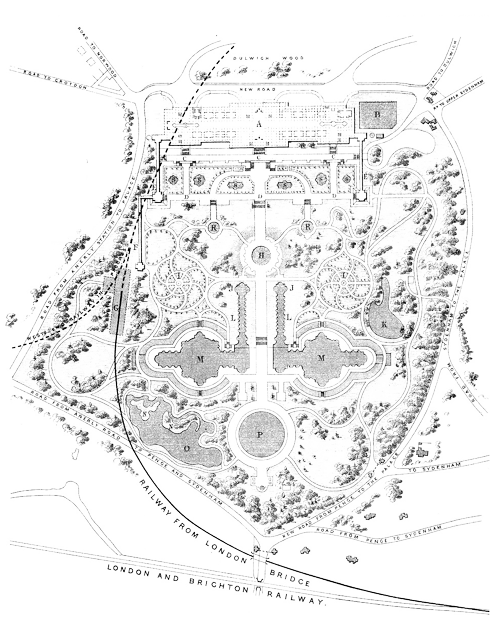-
First among equals in the history of Expo structures, the Crystal Palace was built in London’s Hyde Park to house the Great Exhibition in 1851 and display the very latest technology. The glass and steel building was a gigantic technological feat in itself, housing more than 14,000 exhibitors in 9,200 square metres of exhibition space. It was perhaps the greatest feat of architectural Empire-branding ever undertaken in the UK. The design was by Joseph Paxton, who was, appropriately enough, a gardener by trade. Three years later, the building was moved to a new home on a hill in Sydenham in south-east London and extended in size. Here it shared a park alongside a set of newly-installed dinosaur models and landscaped water features.
It is however perhaps its end, rather than its inception, which has lent the building its mythical status – on the evening of November 30, 1936 the Crystal Palace was consumed by a fire which destroyed this symbol of Victorian technological might in a matter of hours. Thousands of Londoners came to watch as the spectacle became a spectacle, amongst them Winston Churchill who is said to have remarked: “this is the end of an age”. But perhaps he spoke too soon – in 2013 it emerged that a Chinese developer was in talks with the local authority and London’s Mayor, Boris Johnson, about a proposal to rebuild the palace. Third time lucky? p (fs)

Photo: Public domain/originally published in The Sphere, 1936.
-
Search
-
FIND PRODUCTS
PRODUCT GROUP
- Building Materials
- Building Panels
- Building technology
- Façade
- Fittings
- Heating, Cooling, Ventilation
- Interior
- Roof
- Sanitary facilities
MANUFACTURER
- 3A Composites
- Alape
- Armstrong
- Caparol
- Eternit
- FSB
- Gira
- Hagemeister
- JUNG
- Kaldewei
- Lamberts
- Leicht
- Solarlux
- Steininger Designers
- Stiebel Eltron
- Velux
- Warema
- Wilkhahn
-
Follow Us
Tumblr
New and existing Tumblr users can connect with uncube and share our visual diary.
»Intelligence starts with improvisation.«
Yona Friedman
Keyboard Shortcuts
- Supermenu
- Skip Articles
- Turn Pages
- Contents


